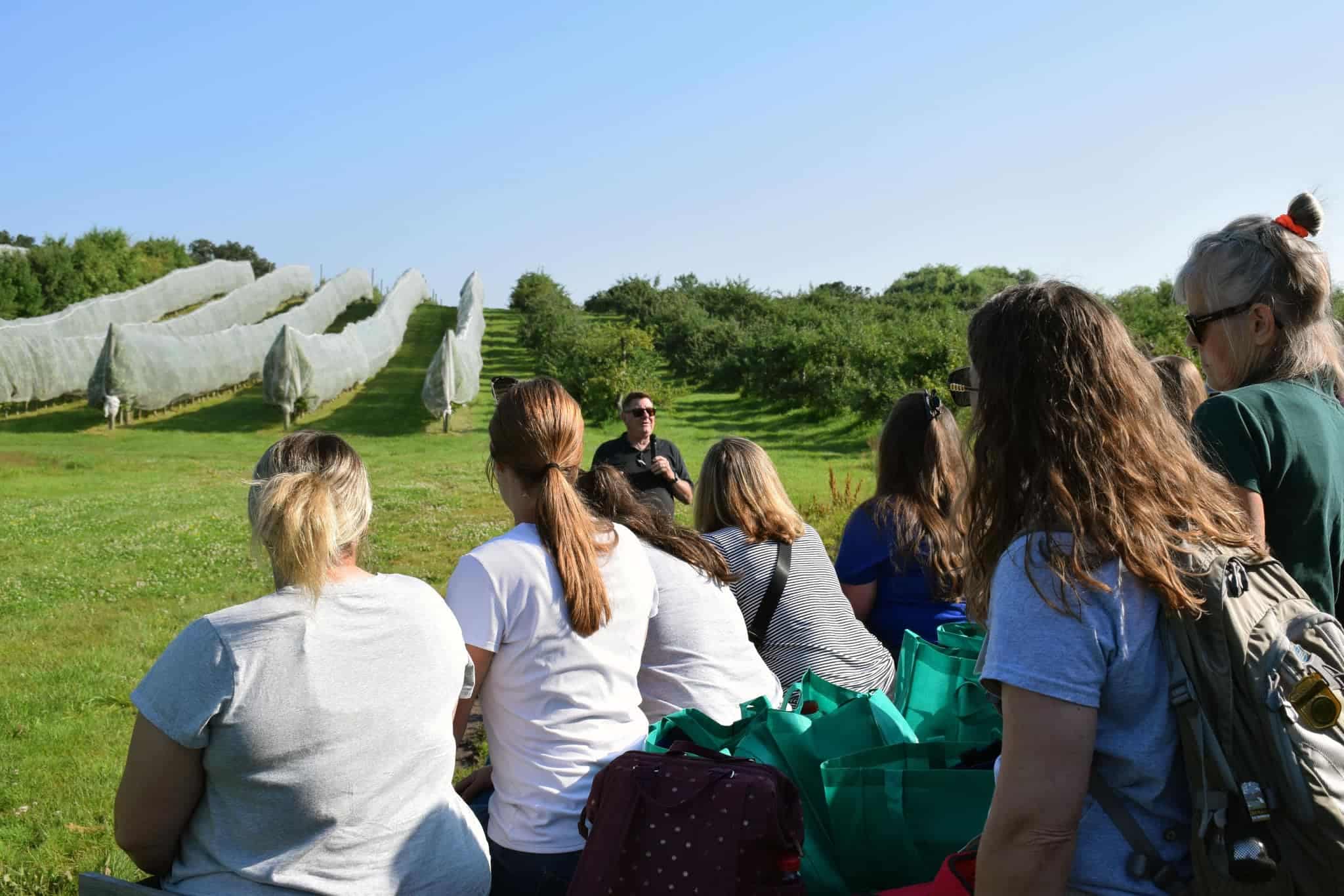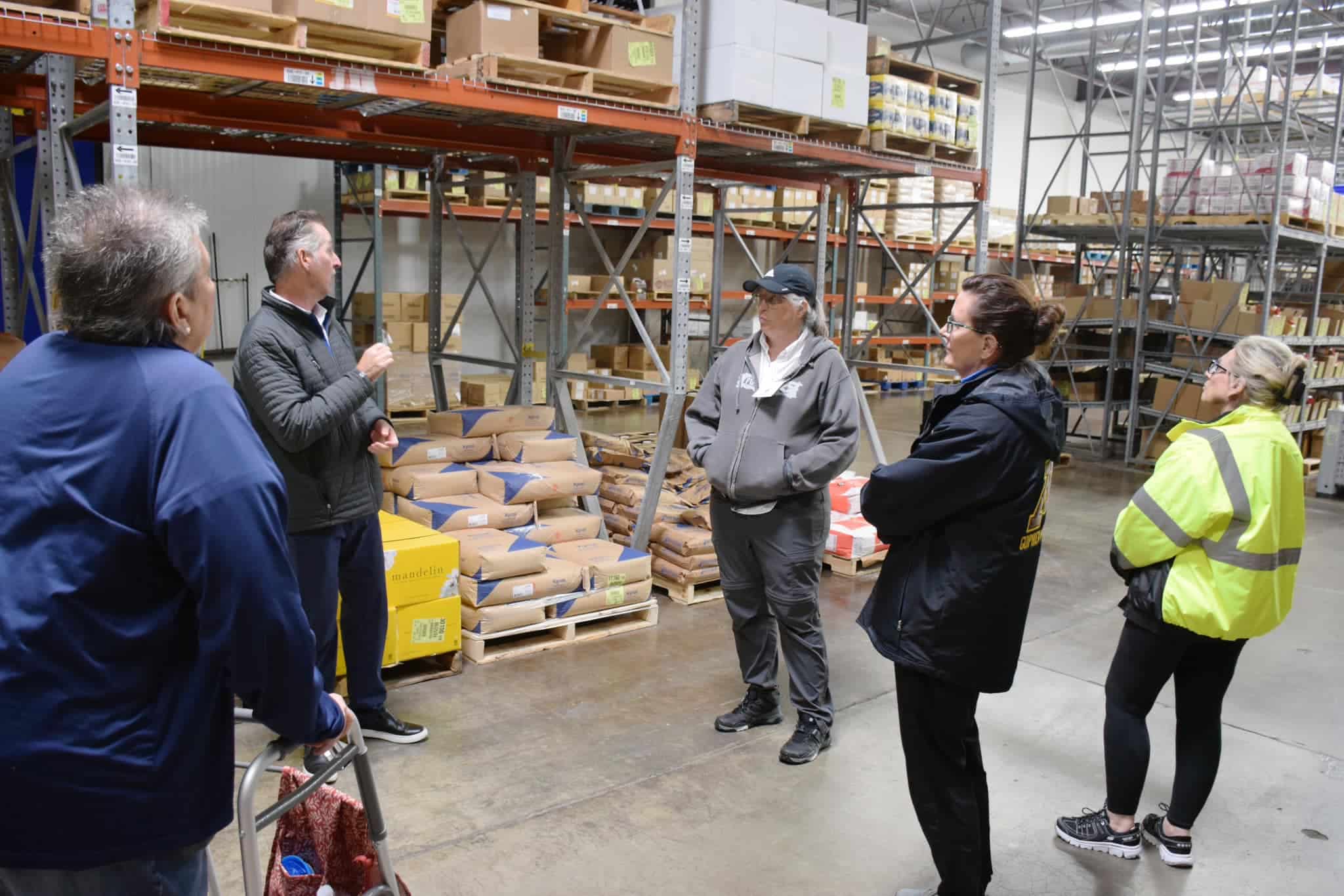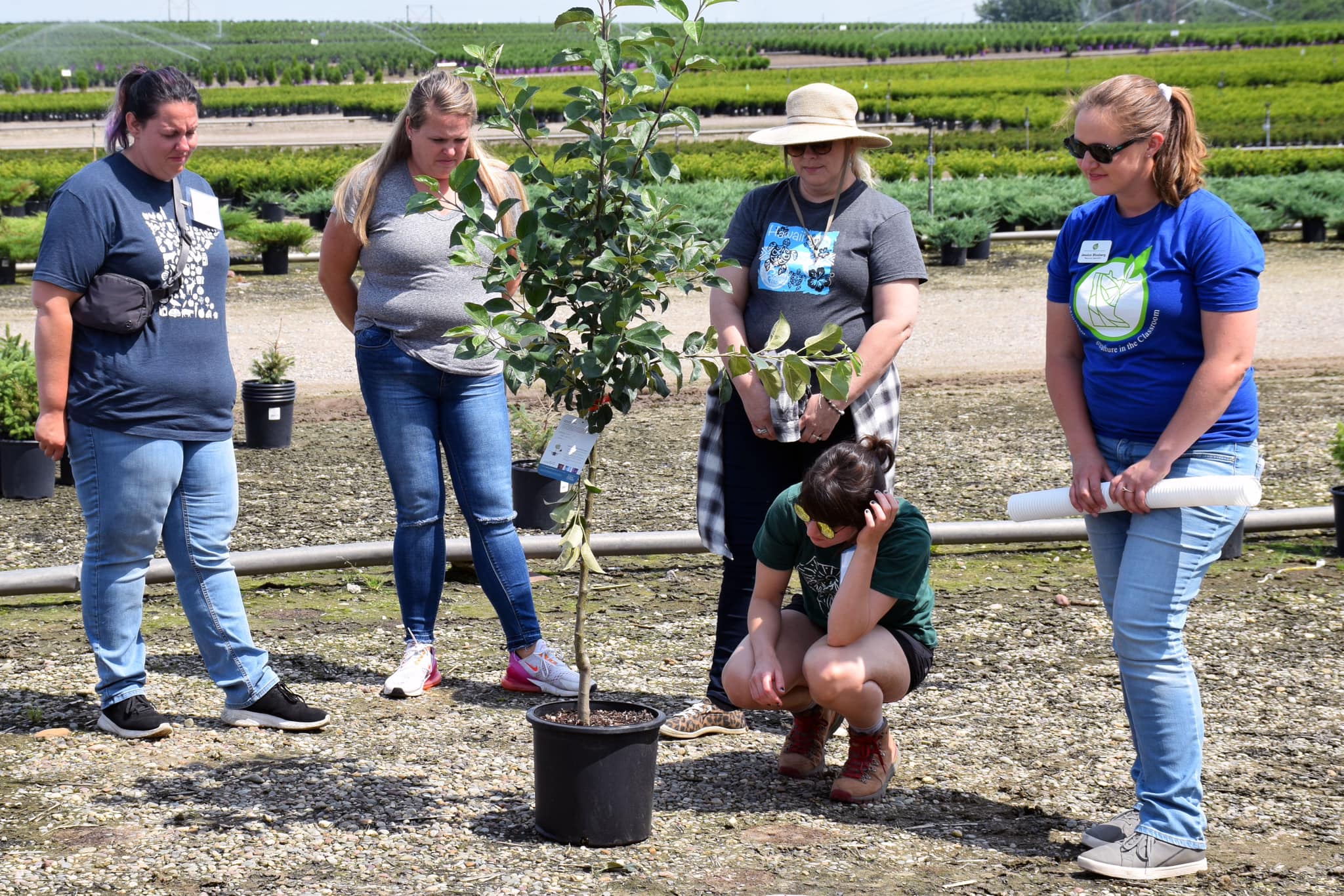Minnesota K-12 educators explored how apples are researched, grown and made into delicious products in the Twin Cities during this teacher tour. This tour featured three stops that allowed educators to garner a deeper understanding of Minnesota apples and Minnesota agriculture. Perhaps the most valuable part of the entire experience was also the connections and collaboration forged with other educators from around the state over curriculum connections provided that expanded their insights on how others are incorporating agricultural learning into their classrooms.
Orchard to Market Tour Stops

Pine Tree Apple Orchard
Educators hopped onto a wagon for ride among the trees of Pine Tree Apple Orchard as we learned about plant growth, insect and pest management, weather protection, tree care and their connection with University of Minnesota research.

Bix Produce Co.
Orchard to Market Teacher Tour attendees stepped behind the scenes at Bix Produce Co. and learned about produce. Highlights included learning about the processing and distribution from one of the area’s leading produce distributors as well as seeing the volume and size of storage including the fridge space.

Bailey Nurseries
Bailey Nurseries was excited to share how their locations are involved with fruit and landscape plant production locally, as well as across the country.
Curriculum Connections
While attending the Orchard to Market Teacher Tour, educators were equipped with free resources and curriculum connections to bring back to their classrooms. Below are the highlighted lessons from this teacher tour.
Minnesota Apple Pie - Grades K-2
Students discover where apples and other agricultural crops grow in Minnesota and identify some of the geographical conditions that had to be overcome for apples to grow here. Using a picture book story to introduce the lesson, students will follow the main character as she collects ingredients around the world to make an apple pie, and then embark on a similar trek around Minnesota using maps to discover that we can find all the ingredients here.
A is for Apples - Grades K-2
Students use their five senses to investigate apples, identify and model the parts of an apple, make applesauce, and discover how apples are grown.
Tree-mendous Fruits - Grades 3-5
Students investigate a variety of tree fruits, discover how and where they are grown, and explore their nutritional benefits.
An Apple a Day Keeps the Doctor Away - Grades 3-5
Students explore organic and conventional farming practices by analyzing multimedia texts to investigate the differences between conventionally and organically grown apples.
Apple Genetics: A Tasty Phenomena - Grades 6-8
Using the context of apples, students will apply their knowledge of heredity and genetics to distinguish between sexual and asexual reproduction as they explain how new varieties of apples are developed and then propagated to meet consumer demand for a tasty, uniform, consistent product.
Apples and the Science of Genetic Selection - Grades 9-12
Students will distinguish between natural and artificial selection and use a student-centered learning activity to see how science and genetics have been used to artificially select apples for specific traits like color, texture, taste, and crispness.
Making a New Apple Cultivar
Pair this activity with lessons on selective breeding. Students will identify desirable genetic traits in apples and use a coin flip to simulate the steps and time involved to breed a new cultivar of apple.
The Making of a New Apple Cultivar - Grades 9-12
This high school activity introduces students to apple growing and shows them how selective breeding is used to benefit both the apple grower and consumer by producing a new and better-quality apple.

